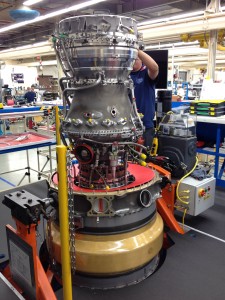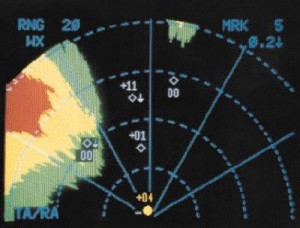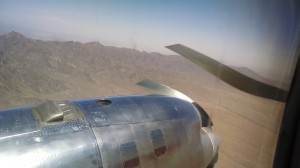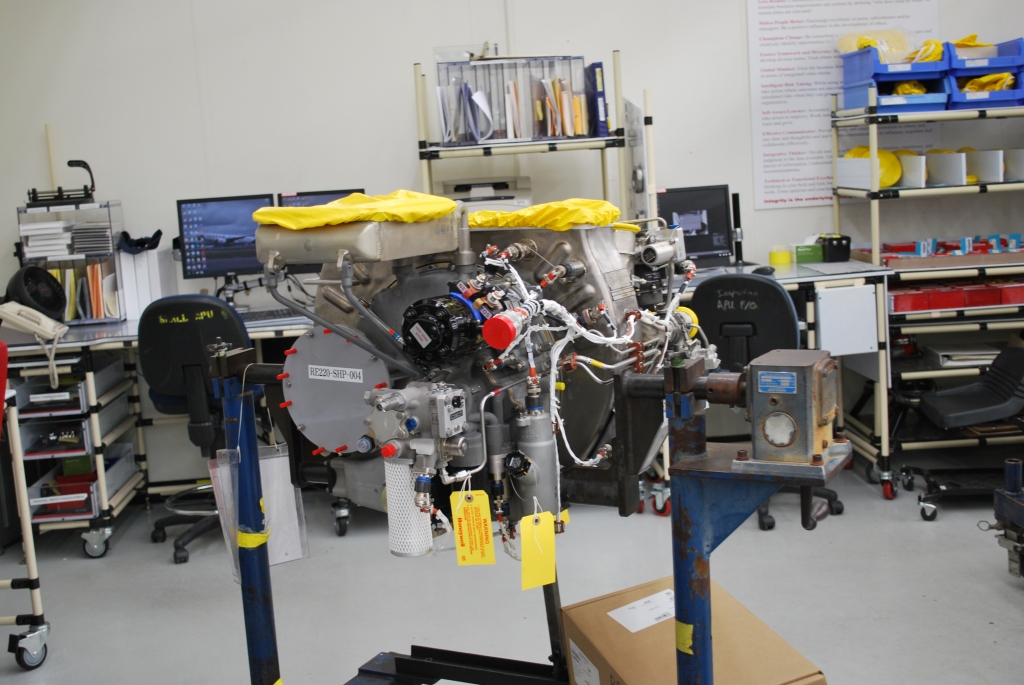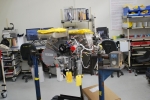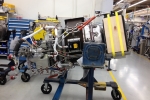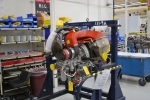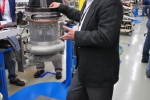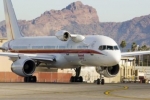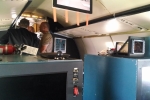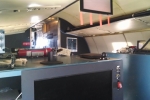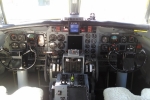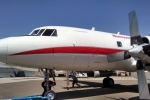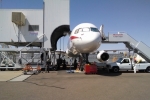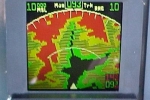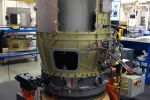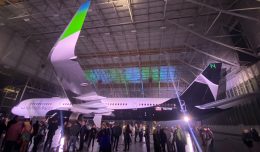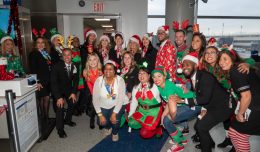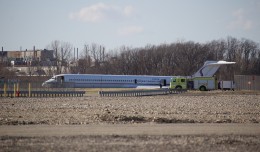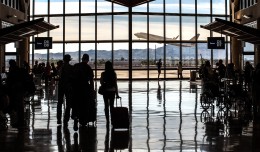“Honeywell? What do they make?” I was asked this question on more than one occasion before attending Honeywell’s media day in Phoenix, Arizona a couple weeks ago. In so many words, the answer is “everything, really.” Although Honeywell plays an integral part in the aviation industry, it is almost all behind the scenes.
From nose to tail, Honeywell probably crams more components into a typical aircraft than any other firm. To the average passenger, Honeywell is probably known as the manufacturer of their home thermostat from 1972. In the aircraft, however, Honeywell manufactures auxiliary power units, engines, avionics, complex air conditioning systems, radar systems, critical safety systems, and even in-flight WiFi hardware.
At their facility located just outside of Sky Harbor International Airport in Phoenix, Honeywell kicked off a two day media event to give journalists, bloggers, and industry players a close look at exactly what it does. At this facility, Honeywell manufactures its jet engines and auxiliary power units (APU), which are essentially smaller jet engines located in the tail of the aircraft to supply electrical power and compressed air to the aircraft when needed. Both the Boeing 737 and Airbus A320 family of aircraft use Honeywell APUs. The brand new Airbus A350 does as well, using Honeywell’s largest APU ever.
After a tour of production floor, it was time to see some of Honeywell’s latest and greatest safety systems up close. That is when things really got interesting. The only way to make sure their new technology works in the real world is to test it in the real world, and this requires an aircraft. Enter the Honeywell Convair 580. Born a Convair 340 and delivered to United Airlines in 1952, this aircraft has been upgraded more times than can be counted to include upgraded engines and cutting edge avionics. Why a 1952 Convair, you ask? Honeywell says the strong aircraft packs an oversized nose, which is perfect for mounting 30 inch radar dishes you might find on a much larger aircraft.
Just after lunch (bad idea), a group of about ten boarded the aircraft so Honeywell could demonstrate the enhanced ground proximity warning system (EGPWS) and traffic collision avoidance system (TCAS). The climbout from Skyharbor was bumpy, but the Convair is a strong bird and handles it well.
So, how exactly does Honeywell test its EGPWS? They point the plane at the side of a mountain, of course! A haunting voice shouting “TERRAIN! TERRAIN!” echoed through our headsets as a monitor at the front of the cabin filled with the red outline of a mountain. The pilots yank the control column and we soar over the top of the of the rocks. Yup, it works!
Closer to the city, TCAS lit up with targets in all directions – this is busy airspace. Under real test conditions, Honeywell will send up a second aircraft and set the two on a collision course. Once the two aircraft get close enough, the system issues a resolution advisory to both aircraft to successfully avoid disaster. One aircraft climbs, the other descends. TCAS is one of the most critical safety systems on a modern airliner, silently watching the skies at all times.
Even after landing, Honeywell was not done showing off its innovations. Runway incursions, where an aircraft enters a runway without proper clearance, is a frequent and stubborn issue which plagues the aviation industry. Be it a pilot unfamiliar with the field, language barrier, or low visibility, runway incursions happen all the time and are incredibly dangerous. After touching down on Skyharbor’s Runway 25L, we had quite the taxi back to Honeywell’s ramp. Just after making a right run, “approaching 25R” was announced over the headsets. There would be absolutely no confusion about which runway we were holding short of.
Bonus Video Content: Flying Onboard Honeywell’s Convair 580.
Be sure to watch at 4:55 to see some interesting audio and visual content.
The next day, we visited Honeywell’s advanced research labs to see the next generations of high tech avionics equipment. Our first stop was a lab where technicians worked on the avionics systems for the Dassault Falcon business jet. Millions of lines of code keep everything running the way it should in the air, such as the aircraft’s “synthetic vision.”
Synthetic vision turns a pilot’s ordinary “blue-over-brown” attitude indicator into a 3D view of the terrain and nearby objects such as tall antennas and buildings. I took a simulator for a ride to see if the 3D view made any difference, and it was immediately clear that it did. Instead of a simple blue and brown screen, I could see high terrain ahead, which may just prevent disaster in a low visibility situation. When I turned the control column hard over to the left to perform an aileron roll (when in Rome…), the screen transitioned from the 3D view back to the blue-over-brown view to de-clutter the view and simplify recovery. It was all quite impressive.

An iPad being used to test the feasibility of using a touchscreen to replace a standard FMC keyboard and display.
Honeywell is also looking to simplify other aspects of the cockpit by introducing touchscreens and modernizing the flight management system (FMS), the clunky 1980’s style interface which lets the pilot interface with the aircraft’s computer. In a full motion simulator, Honeywell techs test how well pilots are able to operate touchscreens in turbulent conditions. So far, they have found that sensitive capacitive screens (like those found on an iPad) lead to inadvertent input, and does not translate well to flight deck use. At the same time, voice recognition is being tested to eliminate all touches and help keep pilots focused on flying the aircraft.
Over the past couple of decades, innovations from Honeywell and other have helped bring down the number of crashes and incidents to all-time lows. However, accidents do still happen despite aircraft being loaded with high tech solutions. At the end of the day, pilots and technology need to work together, which is a whole other battle.
Unless otherwise noted, all photos courtesy Jason Rabinowitz.
Jason Rabinowitz is a true #AvGeek who researches topics about airlines, airplanes and travel. He has become especially adept at reviewing IFEC systems and other inflight products, and is Routehappy’s Data Research Manager. Email him at [email protected] or follow him on Twitter at @AirlineFlyer



